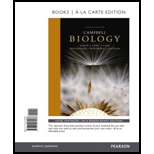
Concept explainers
What changes occur to the four types of floral parts as a flower changes into a fruit?
To determine: The changes that occur to the four types of floral parts as a flower changes into a fruit.
Introduction: Flowers are the reproductive part of a modified thick shoot of an angiospermic plant. There involve various parts that make up the structure of a flower. The four main floral organs in flowers are sepals, petals, stamens, and carpels.
Explanation of Solution
The first step of fruit formation starts with pollination followed by fertilization. Ovule is a part of the female reproductive system in plants. They are contained in the ovaries. After fertilization, the ovule develops to form a seed that contains nucellus, protective coat, and plant embryo (female gametophyte). Ovary covers the ovule. After fusing with the male gamete, the ovule develops into a seed, and the ovary develops into a fruit. The petals, stamens, and sepals typically shed off from the flower. The pistil and stigma start to wither, and the ovary begins to enlarge and ripen into fruit. The journey from flower to fruit includes several variables like weather and climatic conditions that favor the development and ripening of fruits. The changes in any of these variables can result in fewer flowers and poor quality of fruits.
Want to see more full solutions like this?
Chapter 38 Solutions
Campbell Biology, Books a la Carte Plus Mastering Biology with eText -- Access Card Package (10th Edition)
- Not part of a graded assignment, from a past midtermarrow_forwardNoggin mutation: The mouse, one of the phenotypic consequences of Noggin mutationis mispatterning of the spinal cord, in the posterior region of the mouse embryo, suchthat in the hindlimb region the more ventral fates are lost, and the dorsal Pax3 domain isexpanded. (this experiment is not in the lectures).a. Hypothesis for why: What would be your hypothesis for why the ventral fatesare lost and dorsal fates expanded? Include in your answer the words notochord,BMP, SHH and either (or both of) surface ectoderm or lateral plate mesodermarrow_forwardNot part of a graded assignment, from a past midtermarrow_forward
- Explain in a flowcharts organazing the words down below: genetics Chromosomes Inheritance DNA & Genes Mutations Proteinsarrow_forwardplease helparrow_forwardWhat does the heavy dark line along collecting duct tell us about water reabsorption in this individual at this time? What does the heavy dark line along collecting duct tell us about ADH secretion in this individual at this time?arrow_forward
 Biology 2eBiologyISBN:9781947172517Author:Matthew Douglas, Jung Choi, Mary Ann ClarkPublisher:OpenStax
Biology 2eBiologyISBN:9781947172517Author:Matthew Douglas, Jung Choi, Mary Ann ClarkPublisher:OpenStax Biology (MindTap Course List)BiologyISBN:9781337392938Author:Eldra Solomon, Charles Martin, Diana W. Martin, Linda R. BergPublisher:Cengage Learning
Biology (MindTap Course List)BiologyISBN:9781337392938Author:Eldra Solomon, Charles Martin, Diana W. Martin, Linda R. BergPublisher:Cengage Learning
 Biology: The Dynamic Science (MindTap Course List)BiologyISBN:9781305389892Author:Peter J. Russell, Paul E. Hertz, Beverly McMillanPublisher:Cengage Learning
Biology: The Dynamic Science (MindTap Course List)BiologyISBN:9781305389892Author:Peter J. Russell, Paul E. Hertz, Beverly McMillanPublisher:Cengage Learning Biology: The Unity and Diversity of Life (MindTap...BiologyISBN:9781305073951Author:Cecie Starr, Ralph Taggart, Christine Evers, Lisa StarrPublisher:Cengage Learning
Biology: The Unity and Diversity of Life (MindTap...BiologyISBN:9781305073951Author:Cecie Starr, Ralph Taggart, Christine Evers, Lisa StarrPublisher:Cengage Learning





